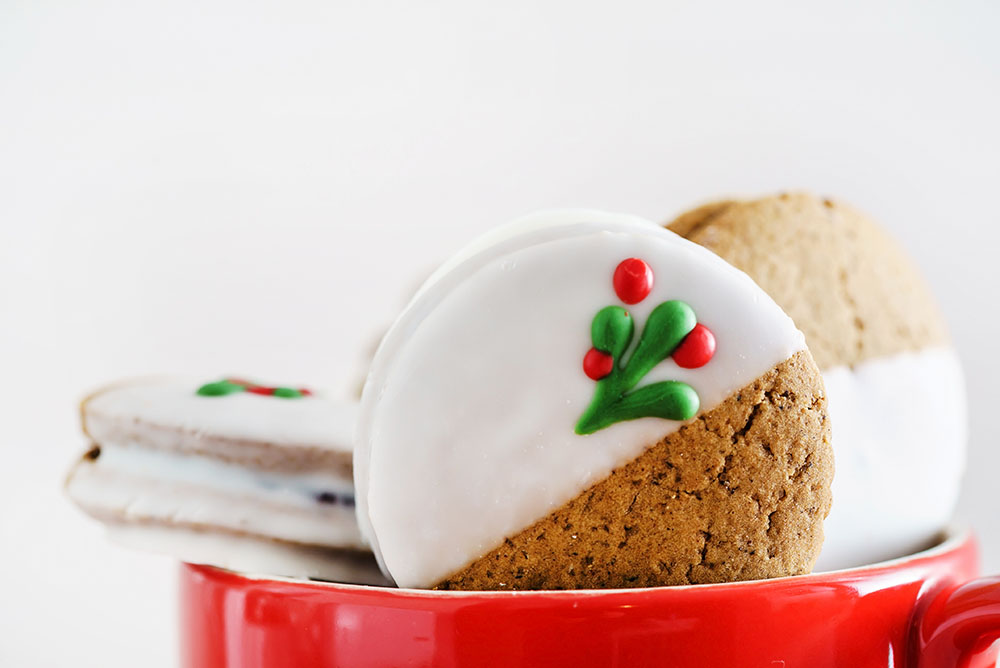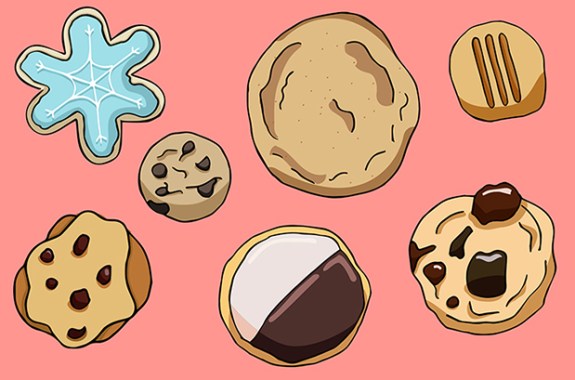
Cookie decorating, cookie parties, cookie eating—we all have our own winter traditions surrounding the infamous cookie. Still, the kind of cookie, the texture, the baking time – those details are harder to agree on. This begs the question:
What makes the perfect cookie? Is there even such a thing?
Like all foods, the perfect cookie is in the eye of the beholder. Some like a soft, gooey cookie, warm out of the oven. Others enjoy the crispy crumble of a thin treat. Maybe you like any cookie as long as there are no sprinkles? To each their own.
However, the condition of a cookie is more than opinion. It is undoubtedly science. Chemistry, if we want to be exact. The chemical state of the ingredients, baking times, and most importantly the ingredients themselves play a huge role in the kind of cookie that emerges from our ovens.
Cookbook author Jeff Potter took Science Friday on a journey into the science of cookies. Now it’s time for you to try for yourself! Can you design the perfect cookie? Let’s collect some data, put on our chef hats, and get baking!
If you don’t have a chef hat, it’s okay, onward!
Gather Materials
Sugars: try different types, but be sure to have brown and white
Fats: try different types, but be sure to have butter and vegetable oil
Dry ingredients: flour, corn starch
Leaveners: baking soda, baking powder
Eggs
Flavors: vanilla extract, or other extracts
Additions: Chocolate chips, nuts, etc.
Baking gear: baking sheet, oven, oven mitts, hot pads, wire cooling rack (optional)
Build A Base
When you are ready to start baking, look up a basic chocolate chip cookie recipe (like this small batch recipe from Land O Lakes®) as a jumping off point. Bake a batch of your base dough and take notes on how your cookies turn out.
Credit: Jennifer Powers
- How did your cookies turn out? What is the consistency and flavor of your cookie?
Test Out Some Variations
There are a number of changes you can make to your base dough. Before you mix up your second batch, think about the kind of cookie you want to create and alter the ingredients accordingly. We’ve created a few scientific ways to create different cookie outcomes. While doing your tests, note what happens to your base cookie dough when you make each of these changes.
Test # 1: Change The Sugar
Your choice of sugar is important to the chemistry of your cookie. Try altering the ratio between brown sugar and white sugar, or just using one type of sugar altogether.
Test # 2: Change The Baking Time Or Oven Temperature
Does a hotter oven change your cookie consistency? Do you get the same outcome if you leave your cookies in the oven for a longer amount of time at the original temperature?
Test # 3: Alter The Leavener
In order for any baked-good to rise you need to add either yeast or a leavener like baking soda or baking powder. Most cookie recipes use either baking soda or baking powder. Try substituting one for the other, or add both.
Test # 4: Change The Fat
What does butter do for a cookie? Butter adds fat, flavor, and moisture to a recipe. Most cookie recipes ask for softened butter. Try substituting vegetable oil, shortening, or even just fully melting the butter.
Design Your Own Cookie
No matter how well you think you know them, you might be surprised by the cookie preferences of the people closest to you. Interview members of your home about their favorite cookie characteristics to get ideas.
The Challenge
Design a cookie that will satisfy everyone in your household! Look at the data you collected about cookie preferences. What consistency and flavor do you want your final cookie to have? What ingredients do you need to design the best possible cookie for everyone?
Credit: Jennifer Powers
So, How Did It Go?
- How did your cookies turn out?
- What about your design contributed to the final result of your cookies?
- Did something you wanted to happen not work out the way you wanted it to? If so, what could you change about your cookie dough next time?
What's The Science?
Food Failures: Cookie Science Secrets
Credits:
Written by Jennifer Powers
Illustrations by Carrie Lapolla
Editing by Xochitl Garcia and Ariel Zych
Digital Production by Xochitl Garcia
Meet the Writer
About Jennifer Powers
Jennifer Powers is a science educator at the Oregon Museum of Science and Industry in Portland, where she makes science fun for everyone through strategically designed exhibits and hands-on activities. She has bachelor’s degrees in botany and Spanish from Washington State University and a master’s degree in plant ecology from the University of Wyoming.

